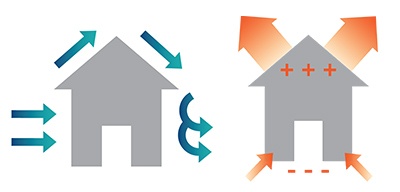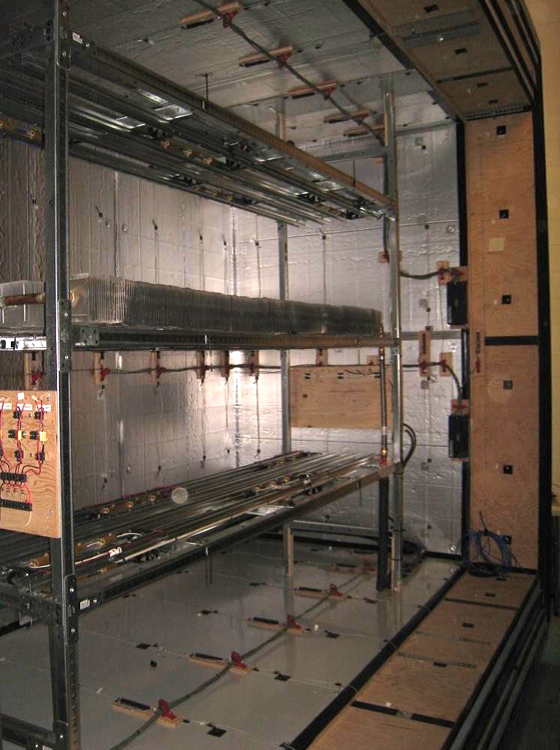No matter what you call it, air flow and its management are vital to the performance, energy efficiency and comfort of a new or renovated home. Not only that: improper air flow can have severe effects on the health and safety of the people in the building by promoting mold growth, spreading pollutants, and possibly creating backdrafting of combustion appliances, increasing the possibility of carbon dioxide poisoning.
Details »Insulation Institute Blog
Posts Categorized: Insulation
Are Insulation R-Values a Good Measure of Insulation Performance?
Yes. The answer is simple, so this could be the shortest blog ever. However, given the misinformation that is out there it is worth explaining why R-value is in fact a good measure of thermal performance and dispelling some common misconceptions about it.
Details »KB Homes’ Approach to Zero Energy Ready Building
KB Homes, a top 10 builder nationally, has firmly established itself as a leader in energy efficient building. In April of this year, it won its sixth consecutive Energy Star Partner of the Year Award. Additionally, in 2013, 2014 and 2015 it received Department of Energy Housing Innovation Awards for its Zero Energy Ready Home (ZERH) construction. With this level of success it begs the question “what are they doing?” DOE’s “Tour of Zero” website has detailed case studies on a number of homes (which we have written about before), including those from KB, but we will look specifically at the approach they took to insulation and air sealing in these homes, as well as the resulting ACH levels and HERS scores.
Details »What’s the best insulation option for Zero Energy Ready Homes?
Net-Zero Energy vs. Zero Energy Ready Homes
Not all net-zero energy (NZE) homes are created equal, well, they aren’t all built the same that is. Also, slight differences in wording can mean different things. Did you know that there are net-zero energy homes and Department of Energy (DOE) Zero Energy Ready Homes (ZERH). What’s the difference? DOE defines a net-zero energy, or “zero energy,” building as “an energy-efficient building where, on a source energy basis, the actual annual delivered energy is less than or equal to the on-site renewable exported energy.” [1] And a Zero Energy Ready home is “a high performance home which is so energy efficient, that a renewable energy system can offset all or most of its annual energy consumption.”[2] So, a ZERH is a building that has maximized its energy efficiency and has the potential to be a NZE home if renewable energy sources are added. Those are the definitions, but how they are built, and what products are used, to meet those standards, is up to the builder.
Details »Competition Highlights Quality Insulation Installation
There’s no question that the quality of the insulation installation has a tremendous impact on the comfort of a home. With temperatures dipping across the country and fall weatherization on the minds of many homeowners, insulation contractors are likely seeing an uptick in interest from consumers in adding insulation to their homes — particularly with news that roughly 90% of U.S. homes are under insulated. As homeowners look to hire qualified professionals to complete the job, the skills of the workers installing the insulation will have significant impact on its performance — and ultimately on the comfort of the home. Therefore, encouraging installer excellence is a worthy goal, particularly if done in a fun, competitive way.
Details »NAIMA Insulation Manufacturers at the 2015 International Builders Show
NAIMA’s insulation manufacturer will be among the more than 2,000 exhibiting brands present NAHB International Builders Show, Jan. 20 – 22 in Las Vegas. IBS is the largest light construction show in the world and will for the second year, be co-located with the Kitchen and Bath Industry Show to create Design and Construction Week, with anticipated attendance of more than 75,000 specifiers, builders, dealers and suppliers.
Details »Loose Fill Insulation Performance and Convection
The North American Insulation Manufacturers Association (NAIMA) frequently receives questions from insulation professionals, consumers and others looking for general information on the performance of various fiber glass, rock and slag wool insulation products. One question that has been asked repeatedly over the years relates to the possible loss of R-value of loose fill (blown in) fiberglass insulation in colder temperatures, a misconception often perpetuated by competing insulation products to try and discredit the performance of loose-fill fiber glass insulation.
Details »HPIP Shifts Focus to Training Insulation Installers
Properly trained insulation contractors play an important role in ensuring the energy efficiency and comfort of a home. One of the most popular insulation products available is loose fill fiber glass insulation, which can be used in all areas of a new or existing home, but is especially suited for areas that are difficult to access, such as truss attics or closed wall cavities. Because poor installation of any system can compromise the performance of the product, a new training effort from the High Performance Insulation Professionals Association (HPIP) aims to educate installers on how to optimize the performance of not just blown-in fiberglass, but a variety of other systems as well. The re-branded organization has reviewed and examined numerous systems and products nominated for inclusion as high performance, and has developed a training program that addresses the building science behind these systems.
Details »Super-Efficient, Super Insulated and Sustainable: Thermal Envelope
Lucas Hamilton has more than 20 years’ experience in the building and construction industry – working with builders, designers and building product manufacturers. Over the years, he’s seen many advanced technologies employed to make a significant contribution to energy management in buildings. But, he says, insulation remains the most effective product for reducing carbon emissions while offering an immediate return on investment in terms of energy savings. And, he believes insulation will play an ever larger role in the future – as an increasing number of builders nationwide are super insulating homes to boost energy efficiency.
Details »Architect La Vardera Makes the Case for Mineral Wool Insulation
Early uses of the rock wool insulation trace back to the Hawaiian Islands hundreds of years ago – where huts were blanketed with fibrous wool collected from volcanic deposits where steam had broken the molten lava into fluffy fibers. And although rock wool and slag wool insulations are commonly perceived to be solely for commercial or industrial use by many people today, in reality, they are ideal choices for residential buildings because of their thermal performance, as well as mold and fire resistance.
Details »


